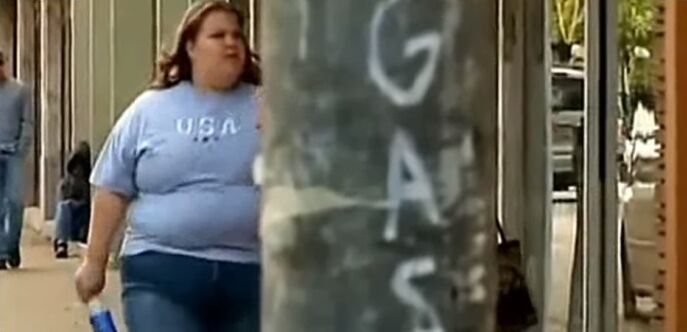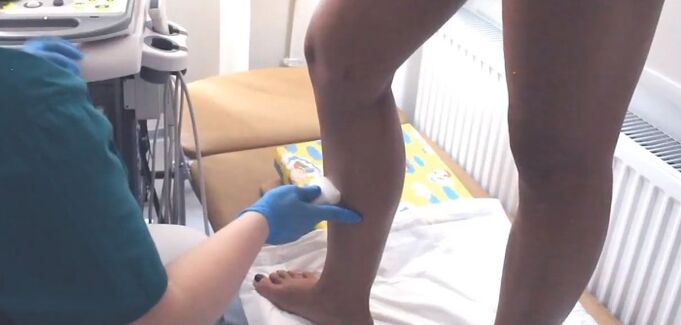The pathological processes that affect the vascular system are serious dangers to the body.This applies to any disease of this type, regardless of its size and localization.In particular, this applies to varicose veins, which in most cases affects the blood vessels in the legs.
In the modern world, varicose veins are one of the local problems, and many people are affected by their development.Pathology is not only a cosmetic problem, but damage to the blood vessels in the legs can have serious consequences.Therefore, it is important to understand the mechanisms of varicose vein development, understand its symptoms, and have ideas about treatment.
Mechanisms of varicose veins development
Varicocele or varicose veins are called diseases in which the blood vessels mentioned undergo pathological changes in the following properties:
- Expansion, that is, the increase of the blood vessel lumen.
- Stretch, or rather, prolongation of the vein.
- The blood vessel walls become thinner, so the veins become more fragile and more susceptible to physical damage.
- Exhaustion or gradual destruction of valve equipment plays a decisive role in the delivery of blood back to the heart.
- Later in the disease, nodules or "vascular stars" similar to an aneurysm due to venous deformation.
All described violations lead to two types of consequences, namely aesthetics and functionality, with the second one weighing more.If we talk about aesthetic factors, we are talking about the fact that subcutaneous blood vessels increase in size, expand and look closer to the skin surface, which is why they are clearly visible even in the naked eye.As the disease progresses and increases venous deformation, they begin to resemble hugs and nodules appear, which exacerbates the aesthetic appearance even more.

But functional problems are more serious and dangerous because we are talking about violating the main functions of the vein - blood transport from the organs to the heart.Due to the depletion of the valve, diversity helps the stagnation process in the blood vessels, and the blood is not completely evacuated and stagnated.This leads to local toxic lesions and a gradual increase in pressure in the blood vessels.Ultimately, in the later stages of the disease, blood vessels cannot cope with excessive stress, and tears appear on thin walls, which can lead to bleeding, formation of hematomas, and nutritional ulcers.
Classification of varicose veins
It has been repeatedly pointed out that the degree of damage and deformation of the vein depends on the stage of disease progression.Therefore, it is worth mentioning that it is customary to classify varicose veins according to the three stages of development:
- The first and simplest form of the disease is compensatory.It is characterized by smaller deformations, which are usually impossible to determine without proper diagnosis.In this case, the symptoms are scarce or non-existent.
- Subcompensation or intermediate stages - The appearance of veins on the surface of the skin, such as deformation, is trivial.However, the blood vessels and vascular networks are already clearly visible, and during the night of the patient, the feeling of fatigue, outbreaks, swelling and torture increases, which may be disturbed.The disappearance of symptoms in the morning (after sleeping at night or after a prolonged rest) is characterized by.
- Compensatory stages are the most severe - we are talking about severe failures of veins, and their deformation is obvious.Not only are the blood vessels highly visible, but they also look like nodules and protrude on the surface of the skin, the nodules form, eczema, hematoma appear.The described symptoms are exacerbated in the form of pain, edema and other unpleasant sensations.
It is important to understand that initially varicose veins do not pose a serious danger and over time treatment begins to prevent the disease from progressing.However, if not involved in treatment, the risk of complications is high, including thrombosis, inflammatory processes in the vein, the formation of nutritional ulcers, and persistent pain syndrome.
Factors of disease development
Knowledge of the causes and factors of the development of varicose veins not only helps in the fight against pathological processes, but also prevents their development.These causes and factors are as follows:
- Genetic predisposition - In this case, we are talking about the weakness of the hereditary susceptible venous valve and the underdevelopment of connective tissue in the blood vessel wall.This dysplasia can increase the development of varicose veins because the valve device is initially dysfunctional.
- Professional components - Risk groups are also led by their professional activities, and they are forced to walk for a long time, especially those who spend a lot (hair stylist, seller, chef, surgeon, etc.).
- overweight
 - The accumulation of excessive weight can lead to increased legs, in which case the cholesterol level in the blood can also have a negative impact on the function of the vascular system.The higher the obesity, the more likely the fact that varicose veins develop.
- The accumulation of excessive weight can lead to increased legs, in which case the cholesterol level in the blood can also have a negative impact on the function of the vascular system.The higher the obesity, the more likely the fact that varicose veins develop. - It helps to develop blood coagulation pathology of venous varicose veins.Due to the increase in platelets, the blood becomes more sticky and there is a risk of blood clots.All of this prevents normal blood circulation, resulting in varicose veins.
- Another factor in the development of the disease is severe hormonal disease.Women are more affected by such problems, especially during pregnancy, menopause or taking hormonal medications.
This list only shows the main factors that varicose veins develop, and there are actually more.For example, we add inconvenient shoes or high heels, alcoholism, smoking, diabetes, mechanical damage to blood vessels, etc.
Clinical pictures
Typically, varicose veins in early developmental forms may not be displayed at all, and symptoms occur at stages 2-3 of the disease progression.However, starting with the initial signs, it is worth considering the symptoms:
- It indicates that the first symptom of varicose veins is leg fatigue.Initially, this feeling was insignificant, making myself feel myself primarily at night.But as the disease progresses, fatigue increases and it becomes more intense.
- Squeeze and pain - bothering from the second stage, and initially closer to the evening, while in the morning, they completely disappeared.But as before, as varicose veins develop, they become stronger and ultimately worrying.
- Prominent vein and vascular networks - This feature is becoming more and more obvious as the pathological process develops.Initially, the veins are stronger than usual, and in later stages, nodules appear in the form of "star".
- Swelling - They can immediately start disturbing, in which case their cause seems difficult to understand, and the swelling itself is so trivial that they barely feel it.Over time, the legs are growing, which can cause a lot of discomfort and increase pain.
- Twitching - It is believed that if a person is systematically tortured by a convulsion covering the muscles of the calf or feet, that can also be a sign of varicose veins.
- Hyperthermia - occurs in the late stages of disease development and is expressed as changes in skin color, and the skin on the legs becomes cyanide.
Diagnostic method
To most effectively treat varicose veins, the development stage of the disease is an accurate understanding and the degree of hemodynamics is evaluated.To do this, you need to take many diagnostic measures:

- Doctors find complaints from patients, collect anatomy, and perform visual examinations and palpation of the problem area.
- Ultrasound scans are used to familiarize yourself with the dynamic characteristics of blood flow.
- Double-stranded scans of veins are one of the most useful diagnostic methods, providing detailed visual images showing the blood flow velocity in different parts of the blood vessel channel.
- The substance was introduced into the vein studied using contrast agents.
Treatment of varicose veins
The fight against varicose veins of any severity requires contacting a bleeding expert who will develop treatment options based on the diagnostic data obtained.
Drug Therapy
The main effect of taking medication is to eliminate the stagnant process and restore normal blood circulation, thereby reducing venous pressure.Additionally, within the treatment framework, symptom treatment may be required.Usually, doctors can prescribe medications for this group:
- Ethanol and intravenous fibroblasts - aimed at improving lymphatic outflow and normalizing blood circulation, performing major therapeutic tasks.
- Drugs for the NSAID group - stop pain and have anti-inflammatory effects.
- Anticoagulants reduce blood viscosity and prevent thrombosis.
- In addition, it is recommended for people with varicose veins to wear special compressed flax.
Only a doctor can determine the need for use of any medication and its appointment.Furthermore, drug therapy simply does not allow disease progression and cannot return to the previous state deformed blood vessels through conservative treatment methods.
Traditional Medicine
Folk therapy cannot have the same serious therapeutic effect as traditional medical methods.However, “Grandma’s Recipe” is a great help with medication, so we’ll consider some of the most effective recipes:
- Tomato Compress - Cut thinly sliced tomatoes and attach to the problem area for 15-20 minutes.Tomatoes contain carotenoid pigments that promote enhanced and toned veins.
- You can compress the potatoes, and for this, wash the legs with potatoes and tie them for two hours.The same method can be used to use cabbage and kalanchoe leaves, but these plants must be cut.
- It is also recommended to rub your feet with apple cider vinegar every day before going to bed, and the treatment process is 30 days.
Surgical treatment
Surgery that fights varicose veins is the most effective way to fundamentally solve problems, not just limit the disease.Surgical treatment methods include:
- Sclerotherapy - Introducing special substances into the venous cavity that adheres to the blood vessels, the result disappears independently, replaced by connective tissue.
- Laser exposure is suitable for blood vessels near the surface of the skin.Laser irradiation produces sclerosis in Vienna, so the blood vessels disappear.
- Ovalectomy - The dressing at the site deforms and subsequently removes its trunk.
